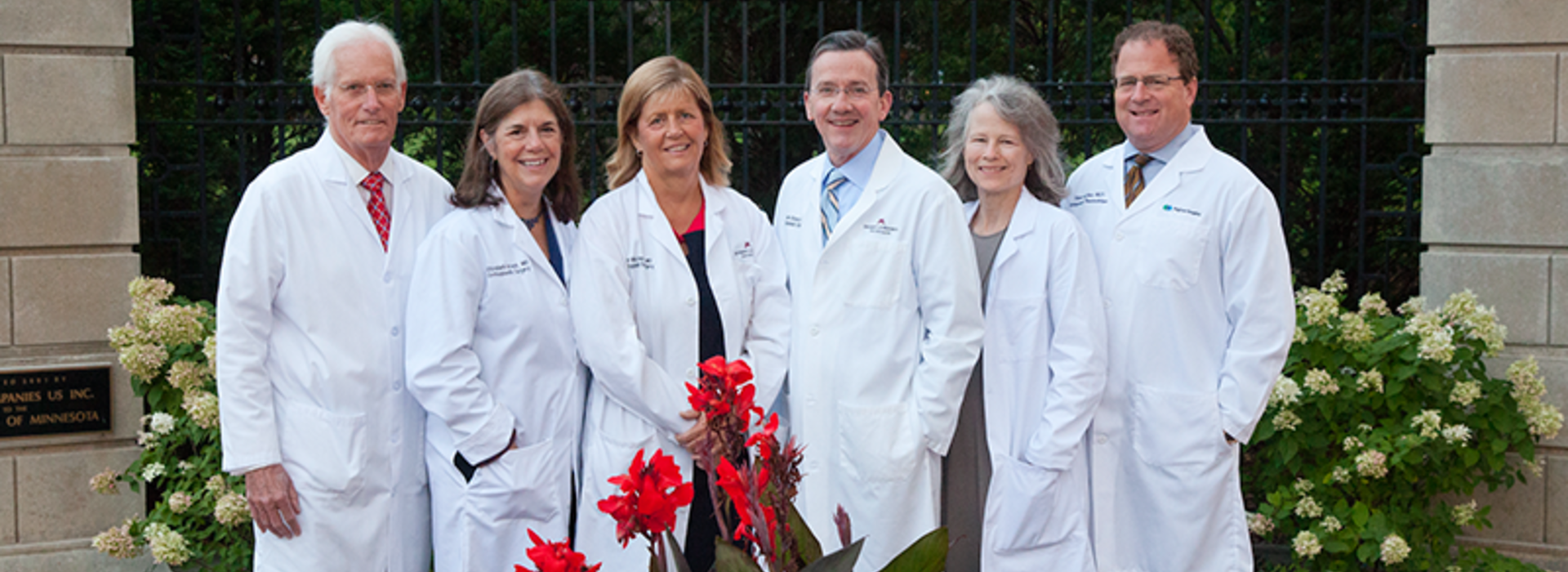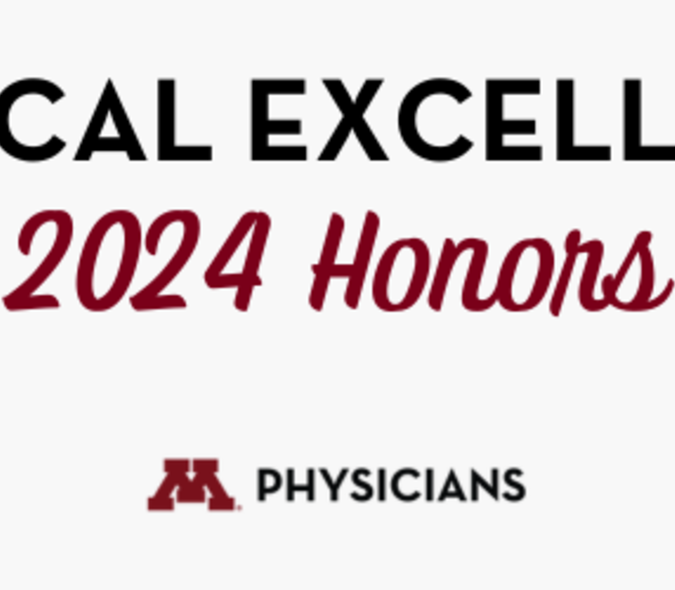
University of Minnesota Leaders Pave the Path for Women in Orthopedics
Leaders in the Department of Orthopaedic Surgery at the University of Minnesota have acknowledged the importance of attracting women into the male-dominated surgical specialty for decades.
Still, according to the Association of American Medical Colleges, five percent of practicing orthopaedic surgeons are women, the lowest of any surgical specialty.
Elizabeth Arendt, MD, professor and vice chair of the Department of Orthopaedic Surgery, completed her orthopaedic surgery residency at the University of Rochester in 1984, where she felt like she was treated equally by her attending staff. In 1980, roughly two percent of surgery residents were women, making Arendt’s career experience unique.
While interviewing at other universities for potential residency opportunities, “they either told me that they had never accepted a woman, or that they ‘gave women a try’ and it didn’t work,” recalls Arendt.
After residency, Arendt completed her fellowship at the University of Minnesota under the mentorship of Roby Thompson Jr., MD, the chair of the Department of Orthopaedic Surgery from 1974-1999.
“I remember at least two of the department chairs from major departments in the United States said ‘we don’t even consider accepting women in orthopaedics because we don’t have any way of managing if the resident gets pregnant and must take time off, because there’s nobody to cover their workload,’” Thompson recalls of a meeting that took place during his tenure as department chair. “That never made very much sense to me. My own bias was that we should take the best people we can get into our residency program and their gender was irrelevant,” he added.
Thompson recognized the need for competent surgeons, regardless of sex or other perceived barriers, and it was his belief that promoting women into positions of leadership would inspire more to follow.
“I think the biggest attraction for students to pursue a discipline is having women role models within that discipline,” Thompson said. “If you have 50 percent of the medical students who are female but they don’t see women who are leaders in that discipline, they’re not likely to be too interested in moving into that direction because they feel excluded,” he added.
Research mirrors Thompson’s words, as studies show that having a role model of the same sex or ethnicity was reported as a positive factor for 59 percent of women and 25 percent of men.
“You’d like to think that being a woman doesn’t matter if you’re going into orthopaedics, because you know it’s a male-dominated industry. You do realize, when you see the other side of it at an institution like the University of Minnesota, that it makes a big difference. You don’t feel like you have to prove yourself to everybody,” said Geneva Tranchida, MD and PGY-5 orthopaedic surgery resident at the University of Minnesota. “There have been women who have come before you, done the residency, and become staff, so it’s known that a woman can do this and do it well.”
Other prevailing deterrents to entering orthopaedic surgery include the perception that it provides poor work/ life balance, and requires brute force, which studies suggest discourages female medical students from pursuing the specialty. According to Clinical Orthopaedics and Related Research, just 14 percent of orthopaedic surgery residents are female, the lowest of any surgical specialty.
“I think there is discouragement on the front end, that going into surgery in general is harder and it’s not doable to have a spouse and family and well-balanced life. People also perceive that physical strength is something women don’t have as readily as men, which really isn’t true,” Tranchida said. “Although you may not be as physically strong, if you use your surgical tools and your body differently, you can accomplish the same tasks.”
Despite misconceptions about orthopaedics, the University of Minnesota Department of Orthopaedic Surgery has graduated 25 percent female residents over the last 10 years.
“When there is equality in all phases of development, not only in residency but also in leadership, it tells you that there are opportunities. It’s not like there’s a glass ceiling where you can be in our department, but you can’t be a vice chair or you can’t be the director,” explained assistant professor and assistant residency program director Alicia Harrison, MD. “Whoever has the skills for the job is going to be the candidate.”
Exposure to orthopaedics in medical school has a positive correlation with women entering the field later. Ann Van Heest, MD, professor and vice chair of education, organizes the Perry Initiative each year. The program exposes female high school and medical students to careers in orthopaedics and engineering.
“The Perry Initiative has been tracking its success, and nearly 80 percent of medical students that participate in Perry Programs have matched into orthopaedic surgery,” Van Heest said.
When female orthopaedic surgeons finish their residency at the University of Minnesota, leadership opportunities within the department are attainable. The University of Minnesota Department of Orthopaedic Surgery surpasses U.S. averages for women in positions of leadership. The department has 20 percent female professors, while the national average is 9 percent. Eighteen percent of associate professors and 37 percent of assistant professors are female, while the national averages are 15 and 20 percent respectively.
“We see women around us all the time. We have three vice chairs and all of them are women,” Arendt noted.
There is still work to be done recruiting not only women, but also racially and ethnically diverse candidates into residency programs. The specialty stands to make tremendous gains in research, education, and patient care as it becomes more inclusive, according to Thompson. “Some of the most creative and innovative leaders in medicine, even in my generation, were women,” he said. “I think they were the ones that blazed the trail and let everyone else know you don’t have to be a male to be an orthopaedist. Women can contribute, be creative, and change the discipline in a positive way.”



